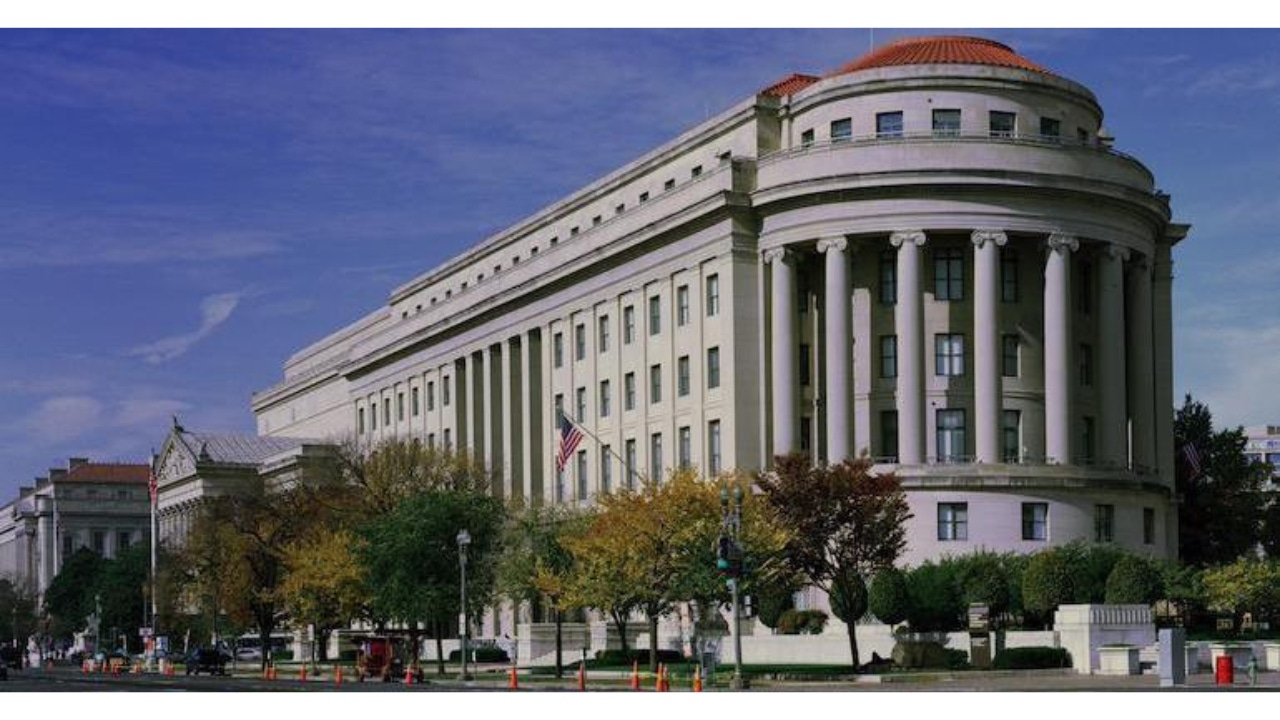FTC: Kroger, Albertsons merger could mean higher prices in over 1,400 communitiesFTC: Kroger, Albertsons merger could mean higher prices in over 1,400 communities
Federal regulators argue that the combined grocer chains could create local monopolies in hundreds of communities

Kroger would achieve anti-competitive market concentration in hundreds of communities across the nation with no legal obligation to reduce prices if its proposed $24.6 billion acquisition of Albertsons is approved, according to the Federal Trade Commission.
A decision is expected any day in the federal case; meanwhile, the two grocers continue to defend themselves in antitrust cases brought by attorneys general in both Colorado and Washington.
In its post-hearing brief to the District Court of Oregon, where Judge Adrienne Nelson heard weeks of testimony from Kroger and Albertsons executives and others, the FTC argued that the two grocery chains failed to successfully argue that the merger would not create a monopoly.
The FTC said in the brief that despite the grocers’ promises to lower prices, the acquisition would incentivize Kroger to raise prices in hundreds of communities across the country.
That assertion is based on an analysis by antitrust expert Dr. Nicholas Hill, who applied the hypothetical monopolist test established by the U.S. Department of Justice’s Horizontal Merger Guidelines to reach the conclusion that “in 1,922 supermarket markets, the acquisition will result in presumptively anticompetitive levels of market concentration …”
“However you slice it … the acquisition is presumptively anticompetitive in many hundreds of markets,” the FTC wrote.
The FTC also argued in the brief that according to Kroger CEO Rodney McMullen, Albertsons is Kroger’s No. 1 or No. 2 competitor in 14 of 17 markets where the two grocery chains operate.
“Consistent with the qualitative evidence, Dr. Hill’s quantitative analysis showed that the merged firm would have presumptively unlawful market shares and an incentive to raise prices as a result of the acquisition in over 1,400 communities around the country,” the FTC noted.
The FTC said that analysis holds true even if some customers choose to take their business elsewhere.
“Importantly, Dr. Hill’s competitive effects analysis was largely agnostic to market definition. In other words, it accounts for the potential that customers might substitute to certain food retailers outside of both plaintiffs’ supermarkets and large store format markets (e.g., dollar stores), and yet still predicts that the transaction will lead to higher prices in hundreds of markets,” the FTC said.
Kroger and Albertsons have argued that the merger would not constitute a monopoly because of competing stores like Walmart, Amazon, and Costco, but the FTC argued that supermarkets provide an array of services, unlike many of their non-supermarket competitors, such as “pharmacies, florists, fuel centers, butchers, and deli and seafood counters.”
The FTC said it “need not prove that there is a subset of customers who only desire this one-stop shopping experience for groceries, or who shop at only one store.”
Consumers shop across multiple store formats for different reasons, but the customer’s “‘need state,’ or what the customer is seeking to find on a particular shopping trip, determines the customer’s reasonable substitutes in terms of choices of stores to visit.”
“For instance, if a customer needs a fill-in shop or a treasure hunt experience, they may go to a dollar store. Club stores offer stock-up trips for bulk items. Premium, natural, and organic stores serve as secondary shops that offer fill-in trips for customers seeking specialty products and a curated assortment. But when a customer’s need state requires a one-stop shopping experience, supermarkets are uniquely positioned to best fulfill that need …” the FTC wrote.
The FTC maintains that the availability of a similar product in a store with a different format, such as a mass merchandise store, “does not mean that each of those store formats provides a comparable customer experience to, or is a reasonable substitute for, shopping at a supermarket.”
For instance, a customer’s decision on where to buy bananas is dependent on how many and what kind of bananas they aim to purchase. Those searching for just two bananas, for example, would not be able to fulfill that need at a club store. Similarly, those looking to buy bananas and a box of national-brand cereal could not do so at a natural food store.
“Each store format may suit a customer’s need on occasion, but the traditional supermarket’s go-to-market strategy satisfies a distinct demand for a one-stop-shopping experience that offers the key combination of convenience, service, high quality, and a broad and deep assortment,” the FTC wrote.
Federal regulators also argued that Kroger and Albertsons failed to meet their burden to offset harm in the deal because their promises to lower prices are unenforceable. The FTC also argued that Kroger and Albertsons failed to prove that the divestiture of 579 stores to C&S Wholesale Grocers would adequately compete against the combined stores.
Kroger and Albertsons’ vows to lower prices, improve associates’ salaries, and not close stores are nothing more than “unenforceable promises,” the FTC argued, adding that those promises can be broken if they fail to maximize profits. Kroger has a fiduciary responsibility to its investors and could change course on price investments, according to the FTC.
“One Albertsons local division executive wrote candidly that, ‘we all know prices will not go down. A $500 million investment in pricing won’t get our prices down to Kroger levels in my view, therefore the conclusion that’s easily drawn is overall prices will increase.’” the FTC noted.
“Another Kroger executive acknowledged, if Kroger’s financial circumstances change — for example, if it falls short of synergies estimates — the company might reduce or cease price investments,” the FTC said.
Kroger’s plan to divest nearly 600 stores to C&S Wholesale Grocers, which currently operates 23 supermarkets and one retail pharmacy, is an inadequate competitor to the combined supermarket giant, the FTC claimed.
They also argued that similar divestitures within the grocery industry have failed.
The FTC said that C&S acknowledged that it could take years to get up to speed to adequately compete with a combined Kroger/Albertsons. “C&S will not run its own pricing and promotions until the second or third year post-divestiture. As C&S admits: ‘[U]ntil we are fully decoupled, we are not a separate functioning company,’ let alone a meaningful competitor that would mitigate a substantial lessening of competition,” the FTC wrote.
Additionally, the FTC noted that the industry has seen a number failed divestitures, such as Albertsons’ divestiture of stores when acquiring Safeway in 2015, and more recently C&S’s purchase of Price Chopper/Tops.
The C&S purchase of Price Chopper/Tops, which was re-bannered to Grand Union, resulted in a 28% decline in sales in 2023, which was their first year of operation, the FTC said.
“And sales have continued to fall in 2024,” the FTC noted. “C&S’s failure with this small divestiture package bodes ill for its ability to serve as a remedy for the far greater loss of competition caused by this acquisition.”
The notion that C&S could compete against a combined Kroger/Albertsons is “implausible at best,” according to the FTC.
Federal regulators also aimed to disprove claims that C&S is prepared to take on the divestiture because of the retail services it provides to some 7,500 independent customer stores.
“These small customers bear little resemblance to the full-service stores, carrying tens of thousands of SKUs, that defendants own and operate,” the FTC wrote. “Even though C&S provides many of these independent stores with retail services — because it would be uneconomical for them to have full corporate office staffing — those services account for under 0.5% of C&S’s revenues.”
The FTC cited other merger-related divestitures in the industry, such as the 1999 Albertsons/American Stores merger, which divested stores to Raley’s, and the 2016 Ahold/Delhaize merger, arguing that all failed to replace lost competition.
“Raley’s acquisition of 27 stores, 19 in Las Vegas and eight in New Mexico, resulted in the Las Vegas stores being sold to Kroger within three years of the divestiture, and Raley’s exiting the New Mexico market by selling those stores back to Albertsons,” the FTC noted.
Similarly, Albertsons’ divestiture of 146 stores to Haggen in its 2015 merger resulted in 57% of the store being closed, many of which were sold back to Albertsons.
In the Ahold/Delhaize merger, divested stores closed “at five to six times the rate of retained stores.”
About the Author
You May Also Like






